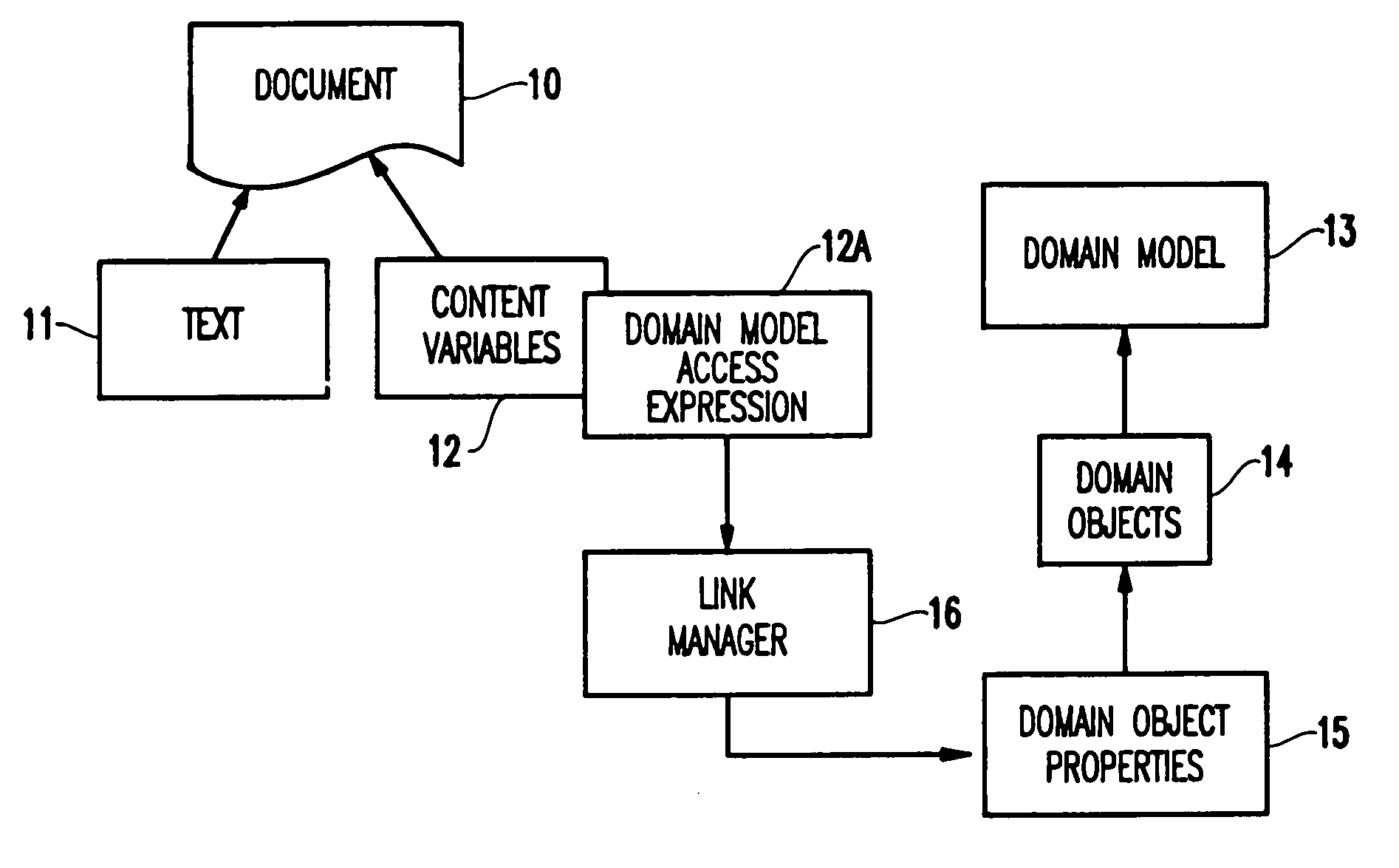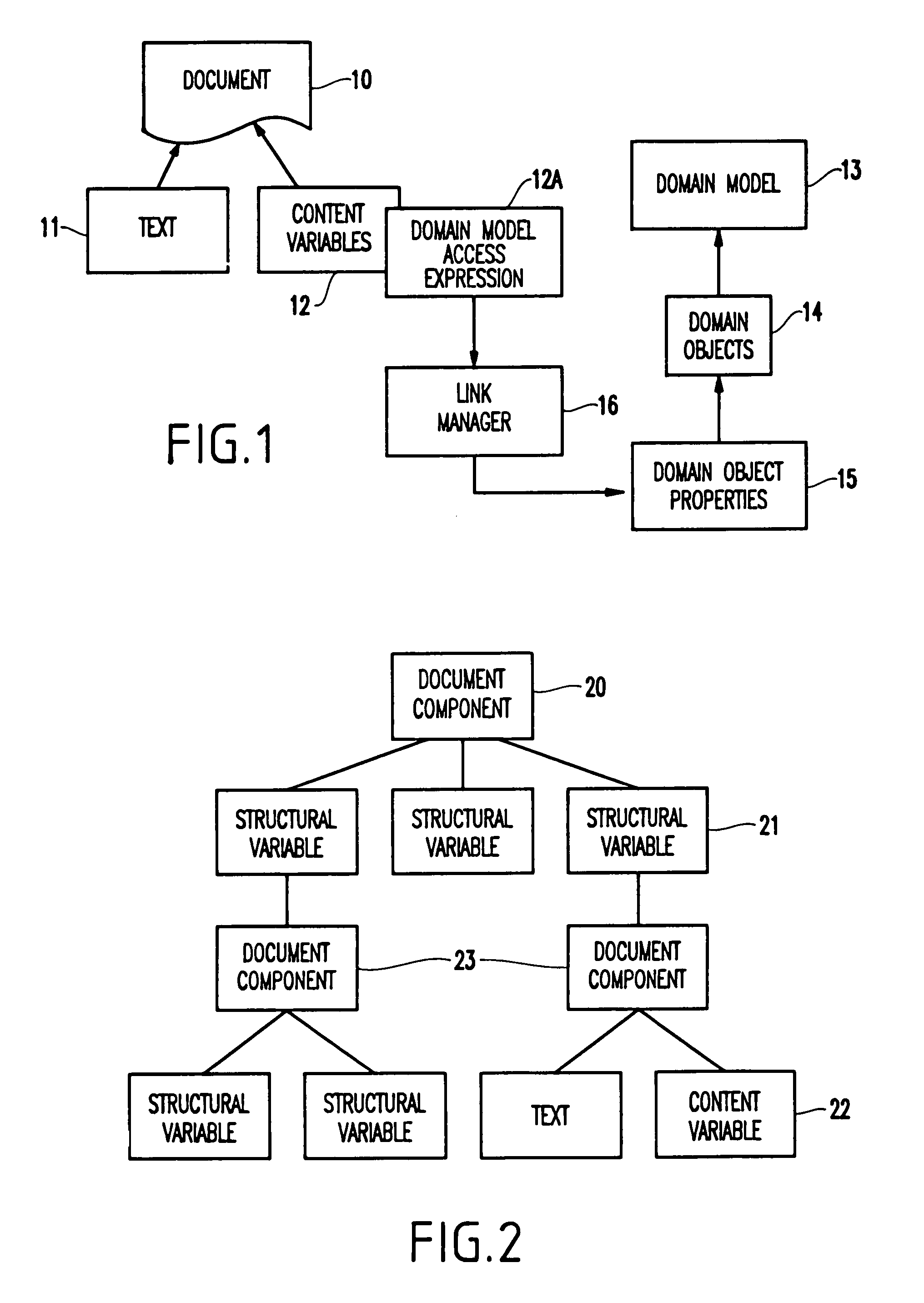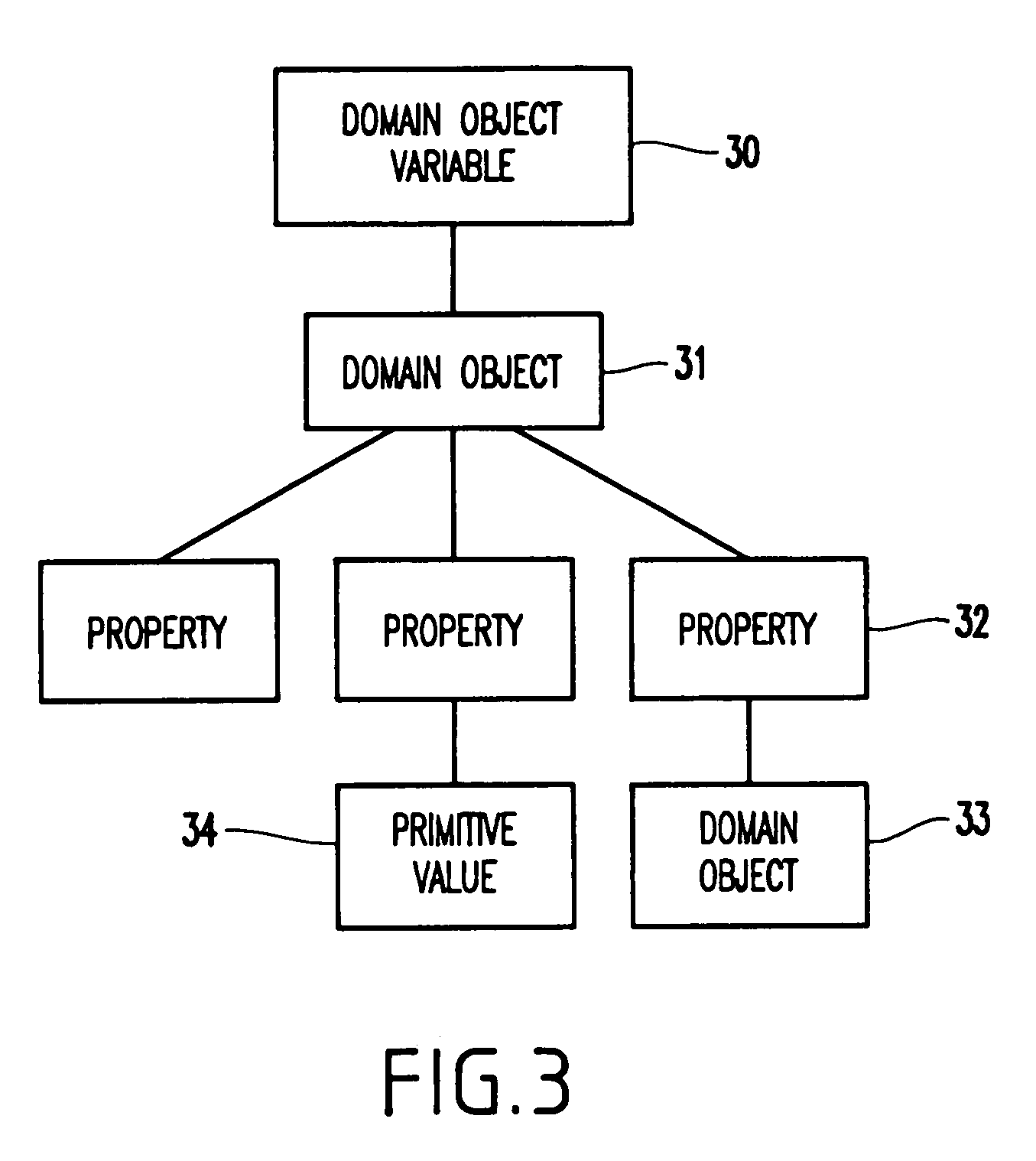Method and system for loose coupling of document and domain knowledge in interactive document configuration
- Summary
- Abstract
- Description
- Claims
- Application Information
AI Technical Summary
Benefits of technology
Problems solved by technology
Method used
Image
Examples
Embodiment Construction
[0035]Referring now to the drawings, and more particularly to FIGS. 1–5, there are shown preferred embodiments of the method and structures according to the present invention.
[0036]As mentioned above, the present invention dynamically binds document component variables to elements of a domain model during document configuration through an object model access expression. This independent and flexible, “loose coupling” of document and domain knowledge allow distinct domain models to be developed independently of any particular document. Furthermore, consistency of the document model is maintained based on the linking between document knowledge and domain knowledge. It is noted that for purposes of the present application, “loose coupling” means that domain model stands independently from the document and can be freely used to build templates for other documents. There is no “tight coupling”. Thus, there is not a one-to-one correspondence between the number of documents and the number ...
PUM
 Login to View More
Login to View More Abstract
Description
Claims
Application Information
 Login to View More
Login to View More - R&D
- Intellectual Property
- Life Sciences
- Materials
- Tech Scout
- Unparalleled Data Quality
- Higher Quality Content
- 60% Fewer Hallucinations
Browse by: Latest US Patents, China's latest patents, Technical Efficacy Thesaurus, Application Domain, Technology Topic, Popular Technical Reports.
© 2025 PatSnap. All rights reserved.Legal|Privacy policy|Modern Slavery Act Transparency Statement|Sitemap|About US| Contact US: help@patsnap.com



